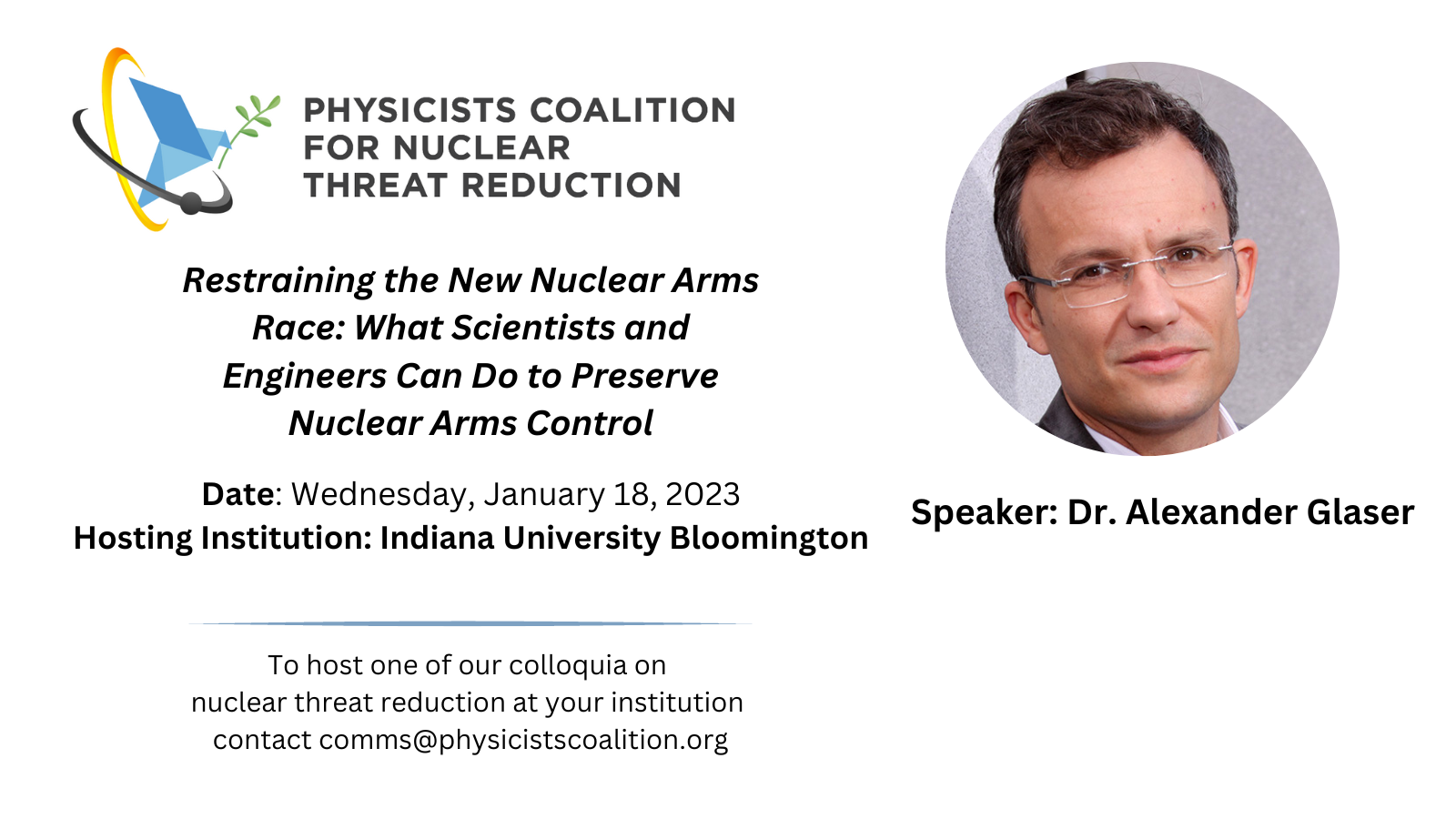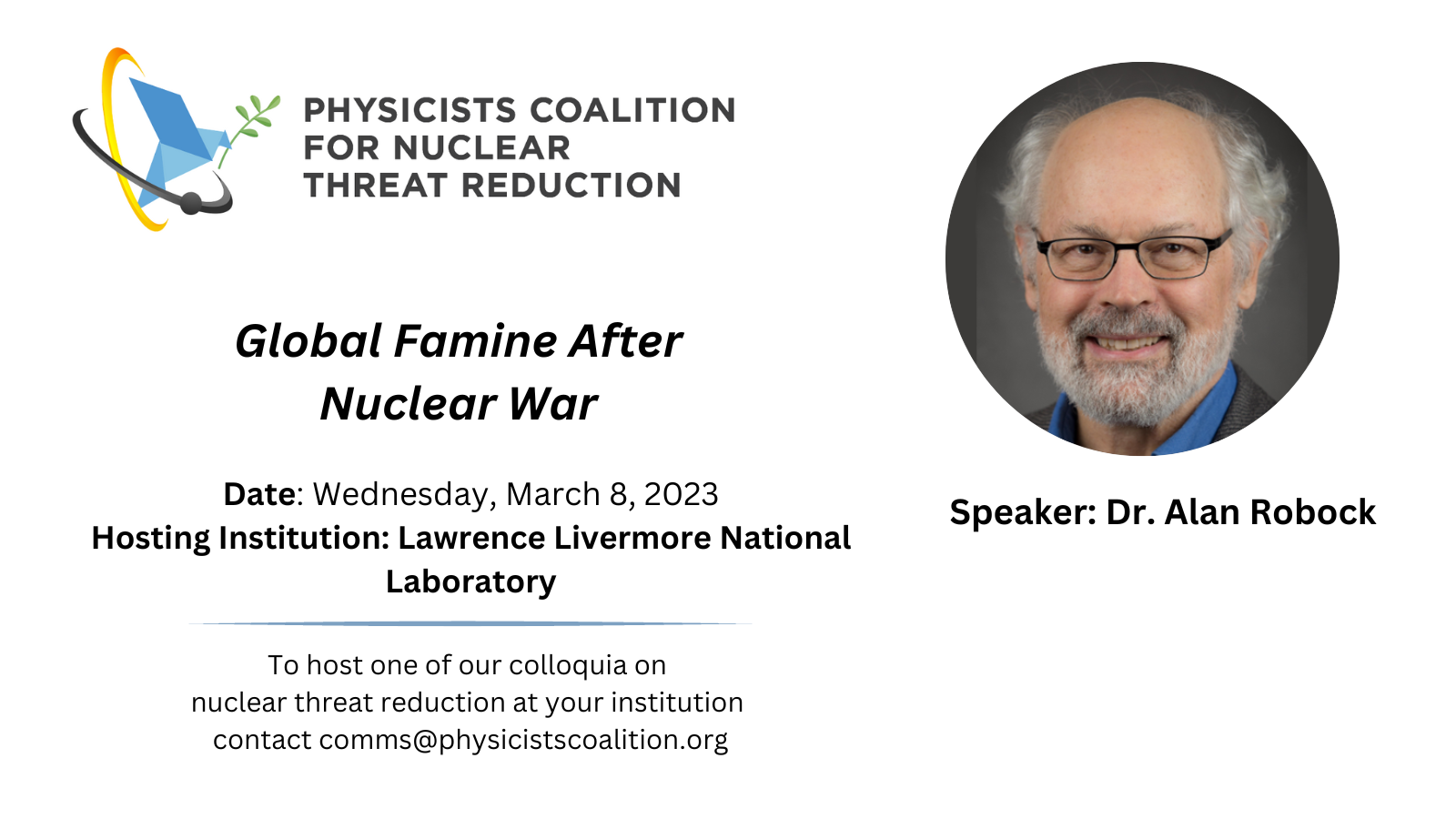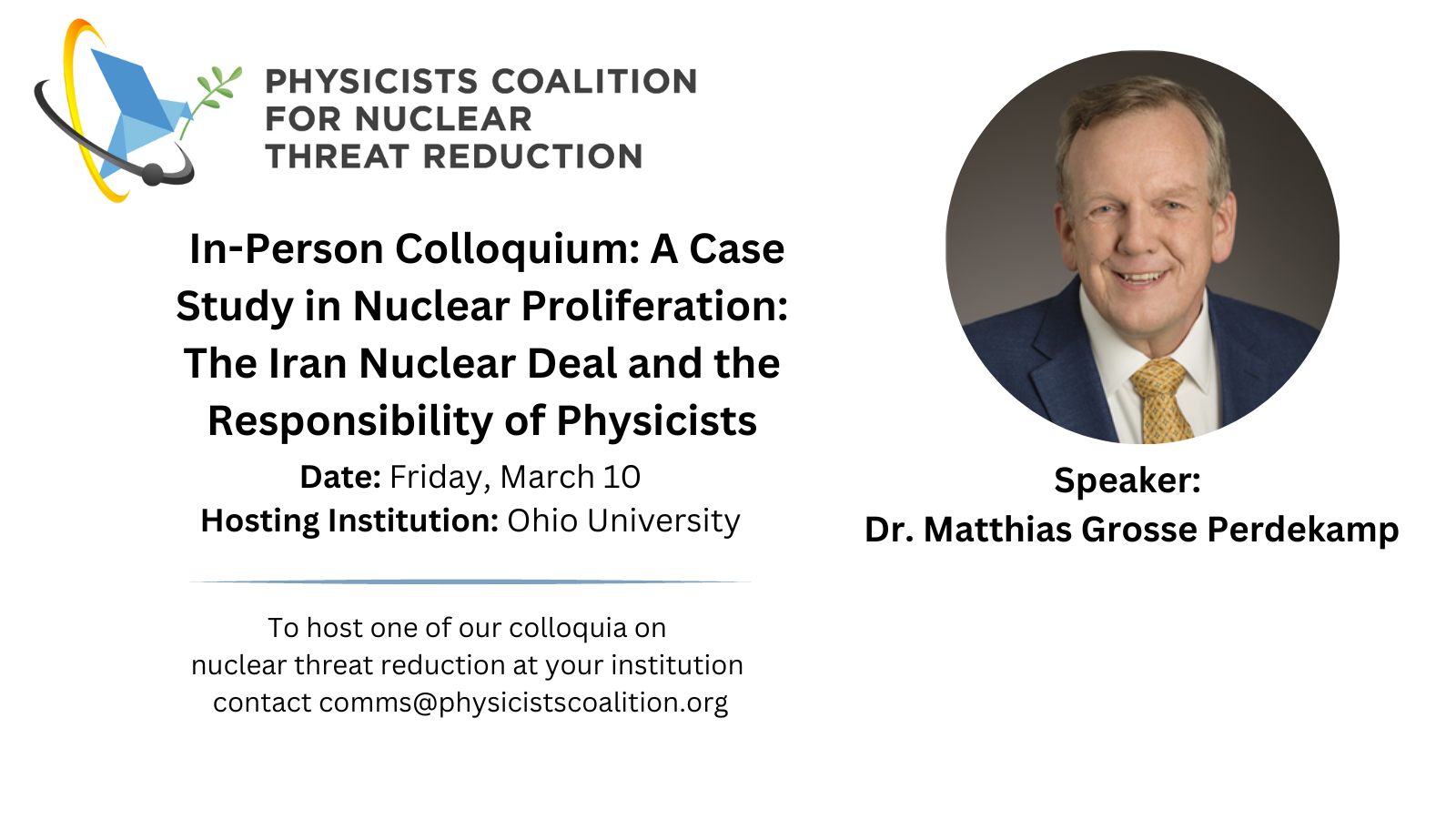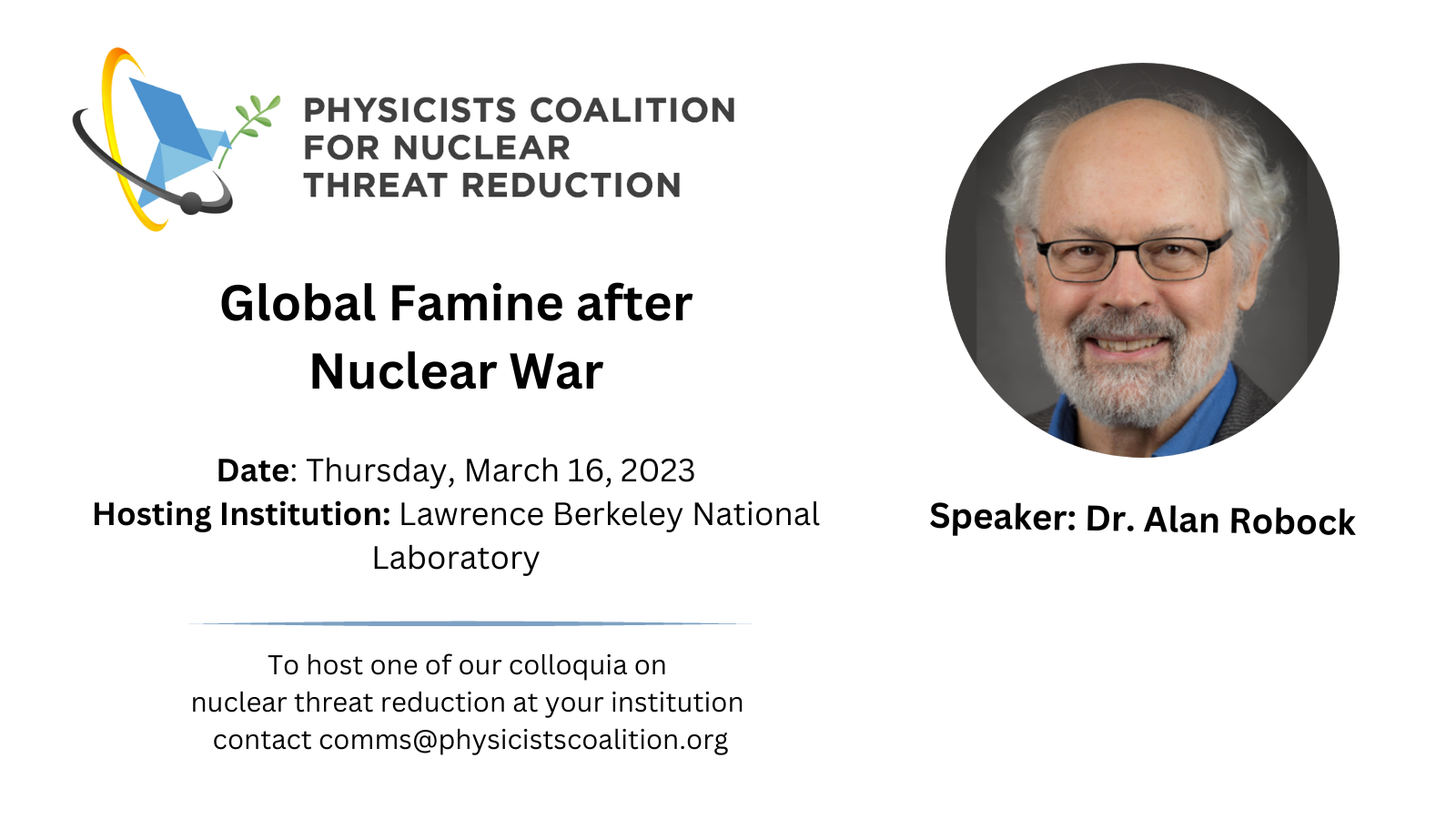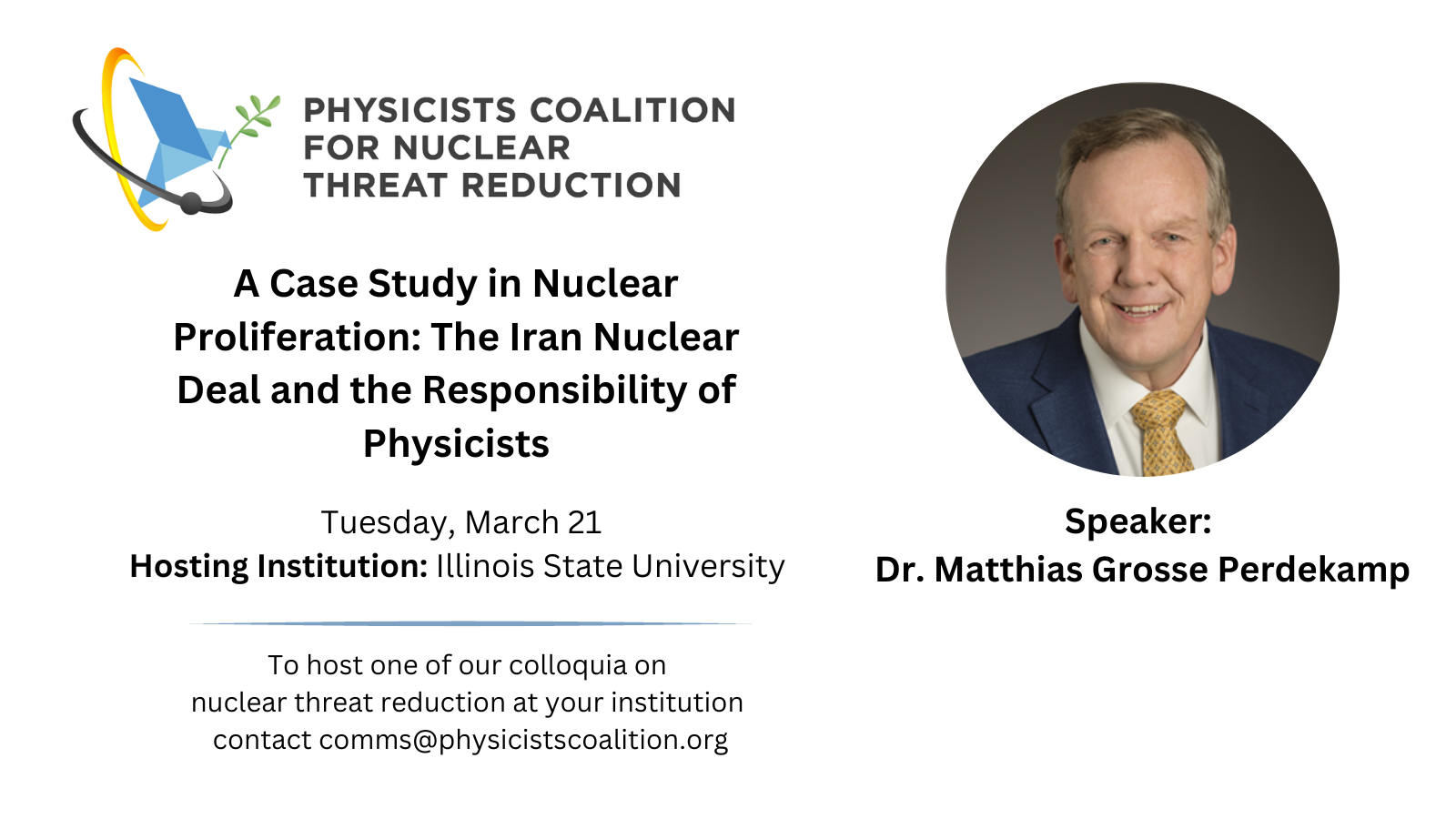Influencing Government Policy on Nuclear Weapons
Our June 10, 2021 webinar discussed how government policy for nuclear weapons is formed, aspects of the current political landscape for nuclear arms control, and current Coalition advocacy on no-first-use. Speakers include Laura Grego (Union of Concerned Scientists), Sharon Weiner (American University), Stephen Young (Union of Concerned Scientists), Stewart Prager (Princeton University), and Charlotte Selton […]

